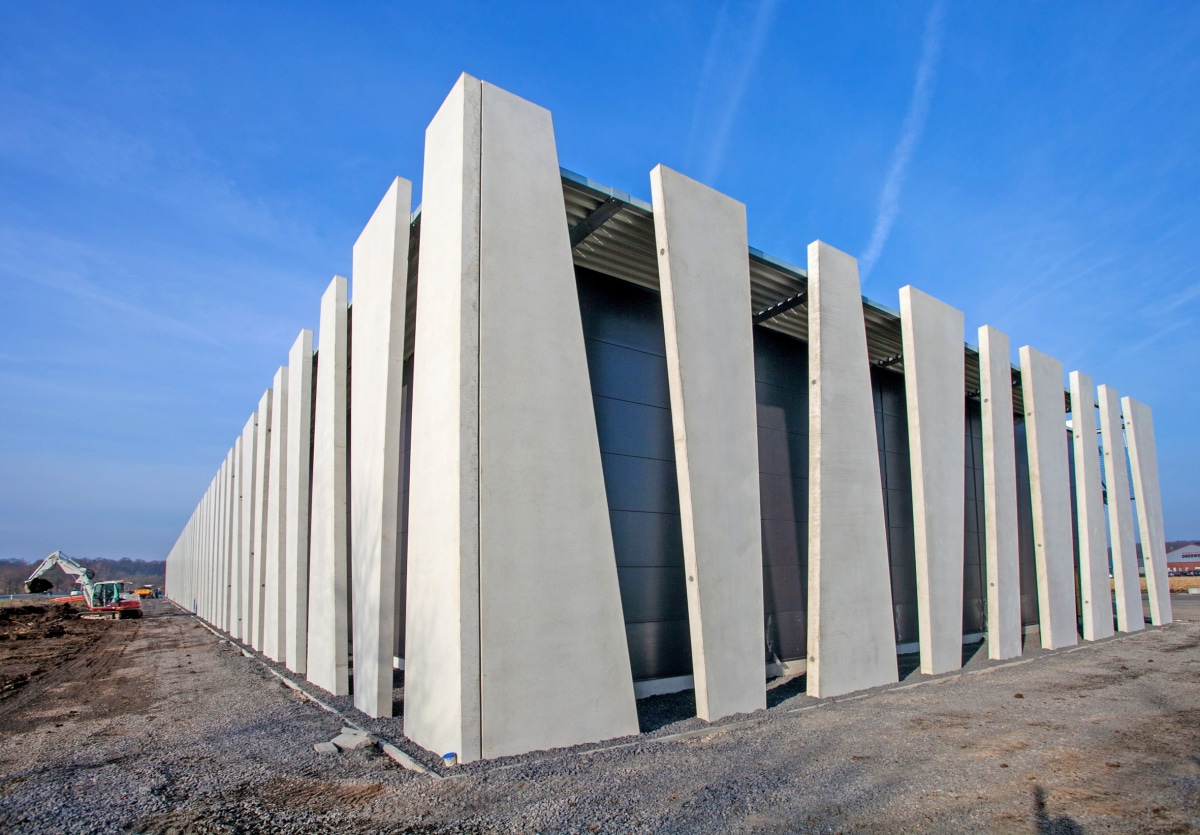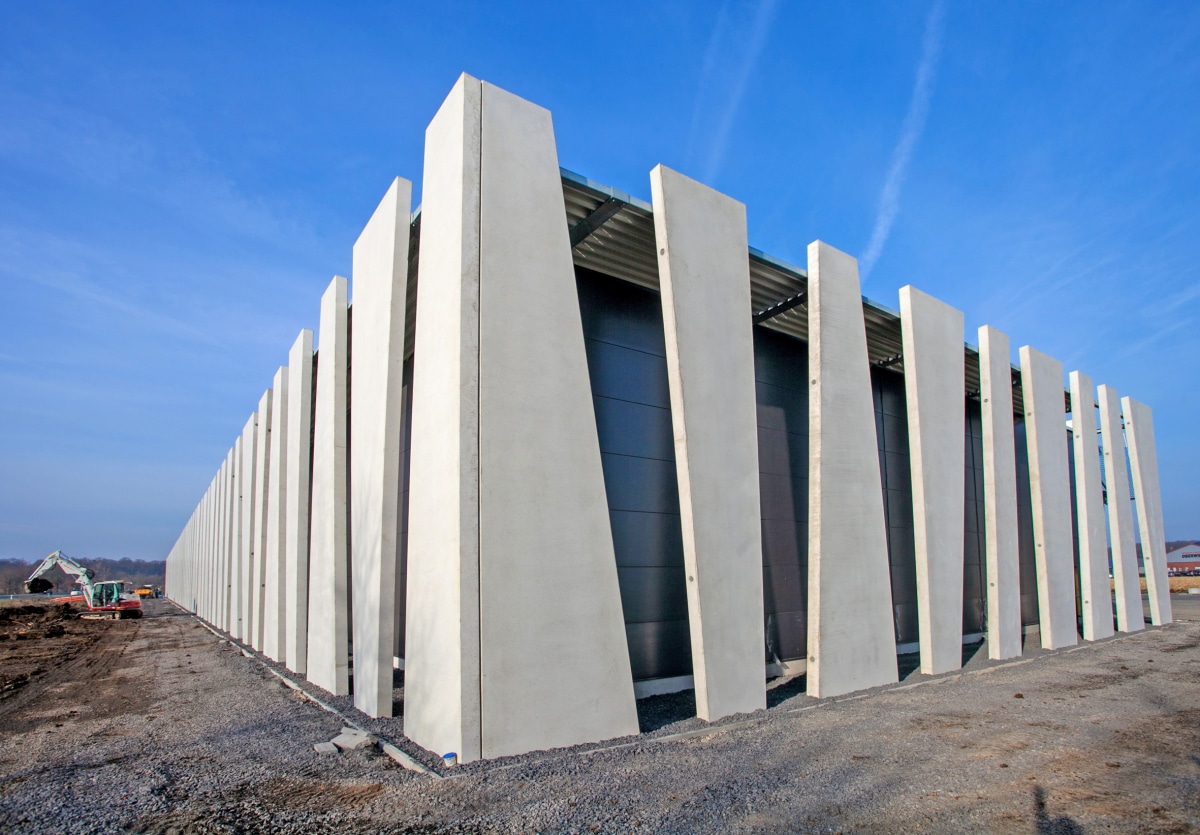Precast concrete is a versatile material that is becoming increasingly popular among civil engineers due to its strength, durability and cost-effectiveness. This material can be used in a variety of applications, from large infrastructure projects to residential developments. In this article, we discuss the benefits and uses of precast concrete and how civil engineers can make the most of this material.
Precast concrete is a very resistant and durable material. They are often used in areas where high loads are expected, such as in the construction of buildings and bridges. Furthermore, prefabricated concrete parts are fire and weather resistant and therefore ideal for outdoor use.
Precast concrete can be used in a variety of applications, both large and small. Some common examples include floors, walls, beams, columns, pipes, and buildings. Furthermore, precast concrete can also be used for decorative purposes, such as in the construction of ornamental architecture.
Civil engineers can make the most of the benefits of precast concrete by considering possible uses in their projects. This material offers many advantages in terms of cost, time and performance.
One possible use of precast concrete that is often overlooked is the construction of retaining walls. Retaining walls are designed to retain earth or water and are an important part of many civil engineering projects. Precast concrete is an ideal material for retaining walls because it is extremely strong and durable. Furthermore, prefabricated concrete walls can be erected quickly and easily.
Another possible use of precast concrete is in the construction of culverts. Culverts are often used to direct water under roads or railways. Prefabricated concrete culverts are a good choice for this application because they are resistant to corrosion and rot. Additionally, precast concrete culverts can be manufactured in a variety of sizes and shapes to meet the specific needs of a project.
There are many other potential uses for precast concrete, and civil engineers should consider all of these options when planning their projects. Precast concrete is a versatile material that can offer many advantages in terms of cost, time and performance.


The Sydney Opera House, in the city of Sydney, Australia.
Properties of prefabricated concrete structures
- comfort level; Thermal resistance
- Properly positioned precast concrete buildings, including walls, beams, slabs and columns, prevent moisture from entering the building through joints.
- The expected fire resistance can be achieved.
- The expected sound insulation/sound level can be achieved.
- Prefabricated structures last a long time if they are made well.
- Prefabricated buildings require little maintenance.
Advantages of precast concrete parts
Precast concrete is a manufactured construction material used in the construction of commercial buildings, bridges, culverts and other structures. Precast concrete elements are poured and cured before being placed in place; they are not assembled on site. Prefabricated concrete parts offer several significant advantages over in-situ concrete.
- Precast concrete elements are used to manufacture custom forms for unique architectural features . When using cast-in-place concrete, a mold or mold must be constructed to shape the material, but when using precast concrete, custom shapes are possible.
- The main advantage of precast concrete is that it saves time during construction . Construction teams can launch multiple elements at once rather than waiting for each element to cure individually. This makes the work easier and faster.
- Precast concrete parts can be produced faster than conventional processes. Prefabricated concrete precast parts allow builders to produce large batches at once with little effort and store until needed on site. Concrete can also be poured directly on site without the need to transport it from a remote location. You save time and money on consumables .
- You have more control over the quality of your project if you use precast materials rather than cast-in-place concrete materials, as you can choose exactly the type of material you want when purchasing your precast panels.
- This reduces construction time by up to 50% . This means fewer interruptions for the public, which can lead to lost customers. Precast products take less time to produce than traditional concrete products, meaning you get the exact sizes and specifications you need without having to cut or change the size of your order.
- You will also save money using precast concrete as it is cheaper than conventional concrete even taking into account the reduced construction time.
- Precast concrete parts are easier and safer for your workforce as much less manual intervention is required compared to traditional construction methods.
- The biggest advantage of precast concrete parts is that they can be manufactured offsite which allows for faster construction times and lower labor costs.
- Prefabricated concrete parts are a sustainable alternative to conventional building materials such as brick or stone, as less energy, water and minerals are required to produce them than other materials such as steel and brick – Reduce the carbon footprint of buildings by around 50% .
- When it comes to a high-quality, easy-to-maintain building material, precast concrete is hard to beat.
- It is also easier to transport and install so there are fewer delays in completing your project.
- Compared to wood, steel and other materials with similar properties, precast concrete tends to be more durable.
- It has a natural resistance to fire and climatic influences as well as rot and insect infestation. With proper installation and care, your precast concrete building will last for decades without the need for repairs or replacement.
Disadvantages of precast concrete parts
- Disadvantages of prefabricated components include labor and material costs, durability, defects in the manufacturing process, and design limitations.
- It is extremely heavy, so one of the disadvantages is that it would be quite difficult to replace parts of the structure if necessary. Its weight makes it difficult to transport and can be a problem when transporting over long distances.
- It is more expensive than standard concrete and is not as flexible. If you want to make changes, you must destroy the forms and start over.
- Prefabricating cement on site takes longer as the cement needs several days to harden before it can be transported. This method is less efficient than casting individual parts in place.
- Additionally, the cost of transporting prefabricated parts can sometimes make construction more expensive than desired.


Ready-mix concrete applications
Precast concrete parts are used in various applications. The construction of prefabricated structures can be internal or external depending on the type of structure required for the project.
Projects that require larger concrete structures, such as bridges and buildings, are often constructed using precast structures.
In precast construction, building sections are assembled and erected before the main foundations or other major components are poured. In some cases, prefabricated elements can be used for purposes such as slabs, wall panels and stairs. Various materials are available for the construction of prefabricated concrete elements.
Precast concrete products are used in a variety of applications, from large architectural structures to small decorative items. Here are some common examples of precast concrete elements: Architectural ornaments such as columns, arches, and slabs Retaining walls and structural elements for highways and bridges Dock pilings, bridge piers, and bulkheads for marine applications Decorative sculptures for parks and public spaces .
Precast concrete can be used for virtually any structural application. In buildings, prefabricated products are often used for exterior applications such as slabs, walls and curtain walls. They can also be used for indoor applications such as stairs or elevator shafts.
The most common uses for precast concrete include columns and beams that support floors, roofs, walls and other structures, as well as foundations for buildings such as homes, offices, schools, shopping centers and parking lots.
Precast concrete parts in buildings
- Reinforced concrete pillars and beams
- Reinforced concrete slabs and prestressed concrete slabs.
- Bridge beams
- Coastal structures
- channels
- Food walls
- manholes
- water tanks
- Septic tanks

